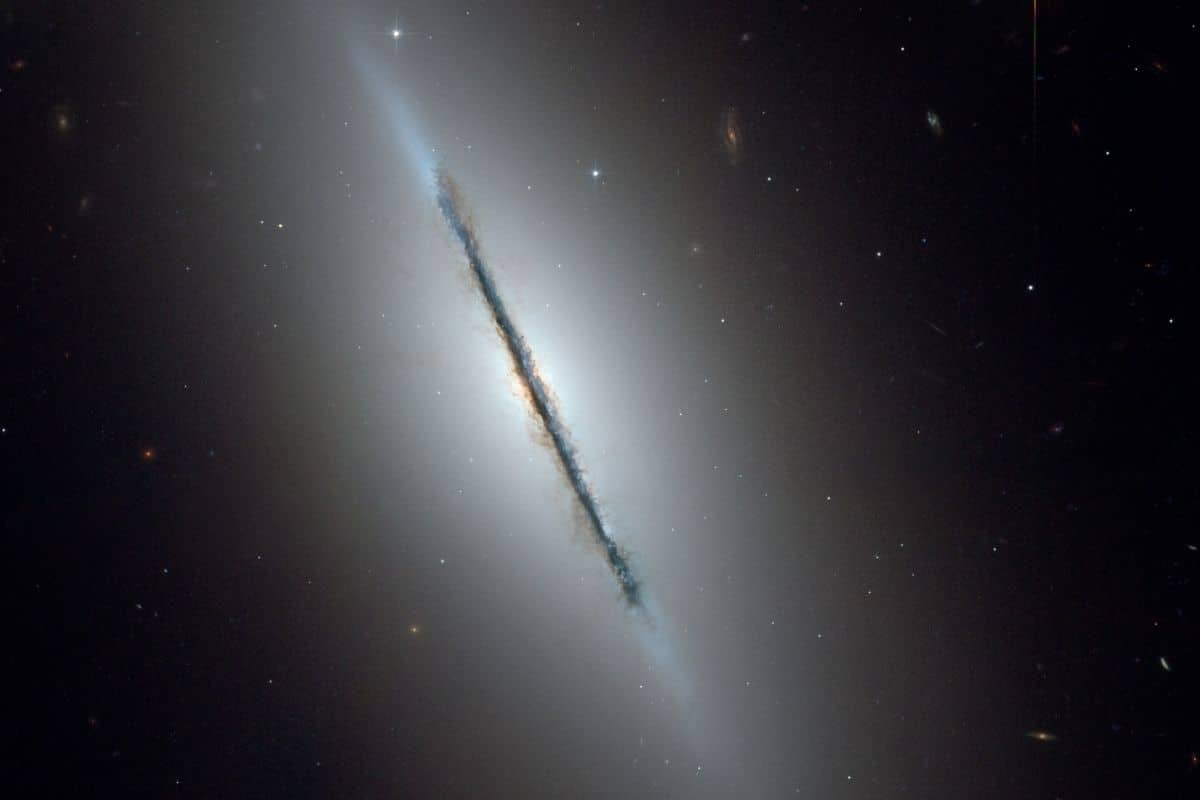
What does a galaxy look like from the side? The space photo of the week shows it.
The Hubble Space Telescope captured this beautiful image of NGC 5866, also known as Messier 102, in 2016. This lenticular galaxy is 45 million light-years from Earth and can be seen from the side. NGC 5866 contains approximately 100 billion stars. In comparison, our own Milky Way is made up of at least 200 billion stars.

In the eighteenth century, the French astronomer Charles Messier published a book containing a group of 110 astronomical objects. This Messier catalog has become world famous and all major galaxies have a place in this book. For example, the Andromeda galaxy can be found as M31. However, there is a lot of uncertainty about object M102. In 1781, the French astronomer Pierre Méchain observed M102 and this object was added to the catalog by Messier. Unfortunately, Messier forgot to add coordinates, making it uncertain which object is M102. Méchain later admitted that he was wrong and that M102 was the same object as M101. The so-called windmill system would therefore appear twice in the catalog, as M101 and M102. But is that really so? Today, astronomers assume that M102 is in fact NGC 5866. In fact, this galaxy fits the description of Méchain (“nebula without stars, faint and quite large, i.e. 6 to 7 inches in diameter, between the left hand of the Oxkeeper constellation and the tail of the Ursa Major”) and the coordinates correspond to those in Messier’s handwritten notes.
The dark dust band is clearly visible in the photo. Behind the dark dust band a bright blue disc is visible, which shoots beyond the dust bands. There are many stars in this disk. In the center of the galaxy you will see a small red bulge. This is the core of NGC 5866. Finally, there is a tinge of light surrounding the galaxy. This is the halo. The halo is a spherical space with many stars and (spherical) star clusters. The density is much lower than in the spiral arms and this explains why the halo is less bright than the blue disk. Fun fact about stars in the halo: They don’t orbit the center of a galaxy, while the stars in the spiral arms do.
Dozens of other galaxies are visible in the photo. These are galaxies that are millions or even billions of light years away from us than NGC 5866. On the other hand, there are also stars in the photo that are much closer to Earth. The largest star can be seen in the upper right corner.
Source material:
†ACS image of NGC 5866” – NASA
Image at the top of this article: Hubble